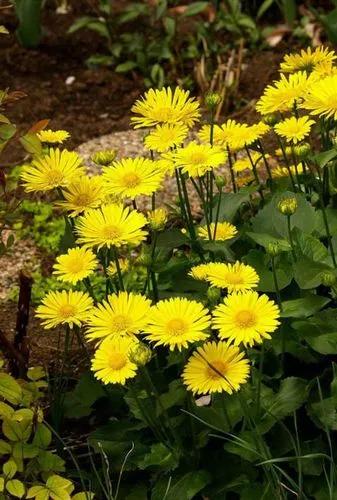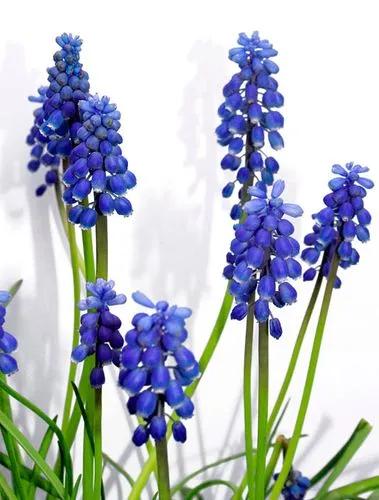Commelina diffusa is typically an annual herb, though it may be perennial in the tropics. It spreads diffusely, creeping along the ground, branching heavily and rooting at the nodes, obtaining stem lengths up to 1 metre. Pubescence on the stem is variable and ranges from glabrous to hispidulous, which can occur either in a line or throughout. The leaf blades are relatively variable, ranging from lanceolate to ovate, with proximal leaves tending to be more oblong. They measure 3 to 12 cm in length by 0.8 to 3 cm in width. North American populations tend to have smaller leaf size, typically measuring 1.5 to 5 cm, by 0.5 by 1.8 cm. The leaf apex is acute to acuminate. The leaf surface can be either glabrous (i.e. hairless) or hispid (i.e. bristly). The leaves are subsessile (i.e. having a very small petiole) with a leaf sheath striped with red and covered with hispid pubescence. The flowers are arranged into cincinni (singular: cincinnus), or scorpioid cymes. This is a form of a monochasium where the lateral branches arise alternately on opposite sides of the false axis. There are typically two cincinni present, with the lower cincinnus bearing 2 to 4 flowers, while the upper cincinnus has one to several flowers. The upper cincinnus is generally exerted on specimens with larger spathes, but it may be included in specimens with smaller spathes. The upper cincinnus bears only male flowers and has a longer peduncle, while the lower cincinnus bears bisexual flowers on a shorter peduncle. The pedicels supporting single flowers, and later the fruits, are thick and curved and measure about 3 to 5 mm. The membranous sepals are inconspicuous at only 3 to 4 mm in length.The petals are blue, though may be lavender in rare cases. The upper two petals measure 4.2 to 6 mm. The anther connective (i.e. the tissue connecting the two halves of the anther) of the centre-most stamen has a broad transverse band of violet. The spathes are solitary, borne on a peduncle and typically falcate (i.e. sickle-shaped) with a cordate (i.e. heart-shaped) to rounded base, acuminate apices and can be either glabrous or hispidulous (i.e. minutely hispid) beneath. They usually measure 0.8 to 2.5 cm long, but may be as short as 0.5 cm and as long as 4 cm. They are typically 0.4 by 1.2 cm wide, but may be up to 1.4 cm long. Their peduncles are usually 0.5 to 2 cm long and rarely up to 2.9 cm. Flowering occurs from May to November. Pollens are elongated with bilateral symmetry, approximate size is 73 microns.
Climbing Dayflower Care
Commelina Diffusa



How to Care for the Plant

Water

Water well and then allow the top 2" to 3" of soil to dry out before watering again. If the soil of a Commelina Diffusa plant stays too dry and the plant is in bright lightVery few houseplants should be placed in direct sun. High light refers only to bright indirect light since direct sun often burns the leaves of indoor houseplants. An area that is too hot and dry encourages Spider Mites and causes blooms to quickly fade. A northern exposure really doesn't provide enough light for high light plants. These plants need to be placed directly in front of an east-facing window, within 1-3 feet of a west-facing window, and within 5 ft. of a south facing window. A high light area has over 300 ft. candles of light., the leaves become stunted and lose color. Over watering causes root rot.

Fertilizer

Feed monthly in the spring and summer with a well balanced plant food diluted to 1/2 the recommended strength.

Sunlight

Commelina Diffusa plants like bright indirect lightVery few houseplants should be placed in direct sun. High light refers only to bright indirect light since direct sun often burns the leaves of indoor houseplants. A northern exposure really doesn't provide enough light for high light plants. These plants need to be placed directly in front of an east-facing window, within 1-3 feet of a west-facing window, and within 5 ft. of a south facing window. A high light area has over 300 ft. candles of light.. The better the light, the more flowers and colorful leaves a Wandering Jew plant produces.

Soil

Use a well- aerated soil that drains quickly. If the soil seems heavy and clay-like, add some peat moss and perlite.

Temperature

60°-85° F (16°-19°C) during the day and a little cooler at night.

Popularity

422 people already have this plant 85 people have added this plant to their wishlists
Discover more plants with the list below
Popular articles






